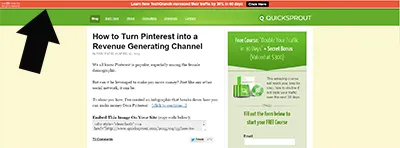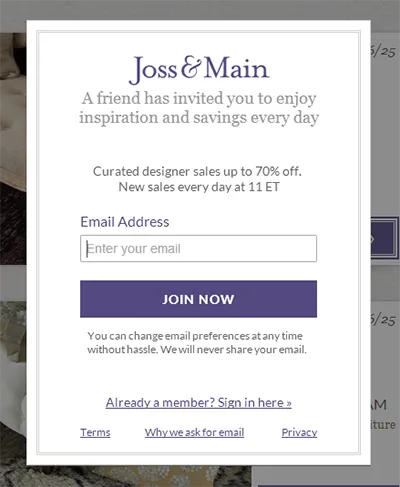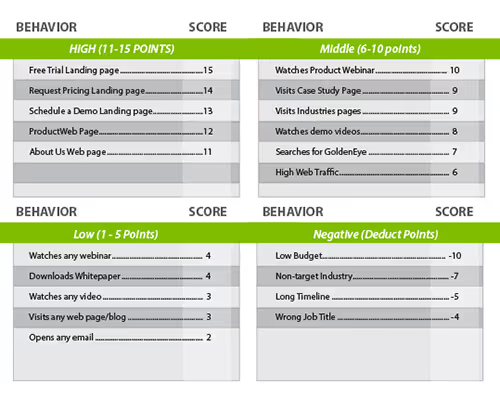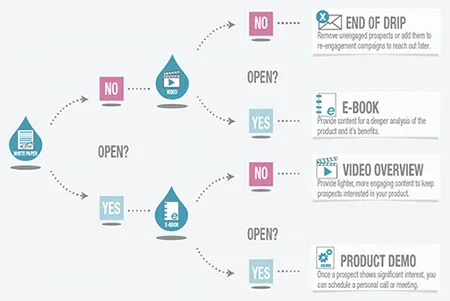6 Ways to Improve Your Email Marketing Strategy
Many companies think about email marketing strategy as a collection of tactics. While it’s true that tactics are at the forefront of any strategy, the only way to build a scalable and repeatable growth channel is with a commitment to process. Prioritizing and delivering your email marketing strategy is how you can truly build an engine for growth.
I’ve blogged before about the power of building a process for growth and customer acquisition you can find the shared folder and articles here.
But today we’re talking about building and improving your email marketing strategy. So let’s get to it!
Getting More Subscribers
One of the building blocks of creating an email marketing strategy is the ability to build a repeatable engine that gets interested potential customers opting in to receive email from your company. The first few examples will go over tactics you can use to improve the amount of targeted email subscribers your company generates.
Using Relevant Content in Your Sliding Blog Footer CTA
Implementing a sliding blog call to action is an experiment you can run to improve your blogs’ conversion rate. When a visitor reaches the end of a piece of content they are more likely to continue their investigation into the topic. A sliding CTA with relevant downloadable content can help convert that unknown web visitor into a potential customer.
This type of call to action doesn’t feel obtrusive to the readers’ experience and is more eye-catching than standard sidebar and footer CTAs. As relevance continues to be an important factor in conversion rate optimization, you can look to improve your sliding CTAs performance with offers that are directly relate to the main content of the article.
For example if I’m reading an article on product management I’d be more interested in an offer that continues my research into that subject (IE Templates, E-books, etc..) than other offers.
If you’re looking to implement this yourself you can find the detailed guide by HubSpot here. You’ll need to be comfortable adding a small bit of javascript into your website’s html templates and adding a few lines to your css stylesheet.
Testing Different Versions of the HelloBar CTA

Another way you can experiment with increasing the amount of email subscribers for your company is by implementing a full-width banner at the very top of your website otherwise known as a HelloBar. In the above example Neil Patel’s Quicksprout promotes a case study of his work with TechCrunch. The reason this type of CTA is compelling is that it’s also placed in a non-obtrusive way to get the readers’ attention.
The placement is also another key area for the success of the CTA. This example positions the HelloBar above the fold so a higher percentage of your visitors will see the CTA.
Another HelloBar factors you can experiment with is the .onscroll event, you can hide the HelloBar on initial visit and have it slide-in whenever a visitor scrolls-up on the page.
This is an interesting user behavior tactic that is similar to when a user reaches the bottom of an article. If I’m scrolling up I’m more likely to be looking for something else than the main content and will be interested in a relevant CTA (IE Case Study, Design Assets, etc.)
Testing Different Pop-Up CTAs

We all know the value of a pop-up CTA. It’s an obtrusive way to get a web visitors’ attention, but when used in the right way they work. Many sites don’t experiment enough with their pop-up CTAs. A part of this has been the slow evolution of these tools with limited targeting capabilities, but that’s rapidly changing.
Now popup tools can use smart triggers to send the pop-up CTA based off of a number of factors like a visitors’ time on site, how many times they visit in a given time period (once every week, etc.) or if they’ve already subscribed to your mailing list.
Testing In-Content CTAs

HubSpot uses a relevant in-content text CTA to grow their potential customer base. It only makes sense that this is another area that companies can start to experiment with as we grow accustomed to these kind of native advertisements in our social media feeds.
The key to this like many other tactics is that they have relevance to the reader and don’t take away from the main message of the article. As nothing disrupts the readers’ experience more than an un-targeted offer.
List Activation and Nurturing
Once you have your lead acquisition engine running, your focus should switch to how you score, nurture and ultimately convert those subscribers into customers. In this section we’ll go over ways you can automate and improve your demand generation efforts once you have a potential customers’ email.
Automated Lead Qualification

Let’s face it, a large amount of the leads we generate aren’t going to be ready for sales. MarketingSherpa’s B2B Marketing Benchmark Survey estimates that 61% of B2B marketers send all their leads to sales, but only 21% of them are qualified. You don’t want to waste a salespersons’ time with an unqualified lead that doesn’t have that magic trifecta of budget/timeline/authority.
So how can you help your sales team focus on the right leads?
Automated lead scoring systems can get the lead intelligence your sales teams need to do their job effectively. Assigning a score to every marketing interaction a potential customer has with your company can help your sales team connect the dots and focus their time on leads that have a higher chance of converting.
In the example above it shows the various subscriber activities marketing automation systems can track and assigns a score to each interaction. IE 4 points for watching a webinar or 9 points for reading a case study. Whenever a lead reaches a certain score threshold they then should be qualified enough to talk to your sales team. IE A score of 50 points or more indicates genuine interest in your product/service.
Look into platforms like HubSpot and Marketo for their lead scoring and marketing automation capabilities.
Lead Nurturing Campaigns

Drip campaigns are an automated way to send out your educational content to subscribers. This tactic can help you build 1:1 relationships with your subscribers by giving different content experiences to certain segments of your list. IE on-boarding new subscribers, nurturing un-engaged prospects, etc..
In the example above you can set potential customers on specific drip email tracks based off of their engagement with your emails. Subscribers who are highly engaged with your content are more ready for an invitation to a product-focused webinar than customers who haven’t opened any emails.
TL;DR
The key to improving your email marketing strategy is having a framework in place for your team to come up with ideas and implement them. Areas that we highlighted today were the importance of having a strong lead acquisition funnel through content marketing as well as a refined process for lead qualification and drip campaign segmentation.
MarketingSherpa Link